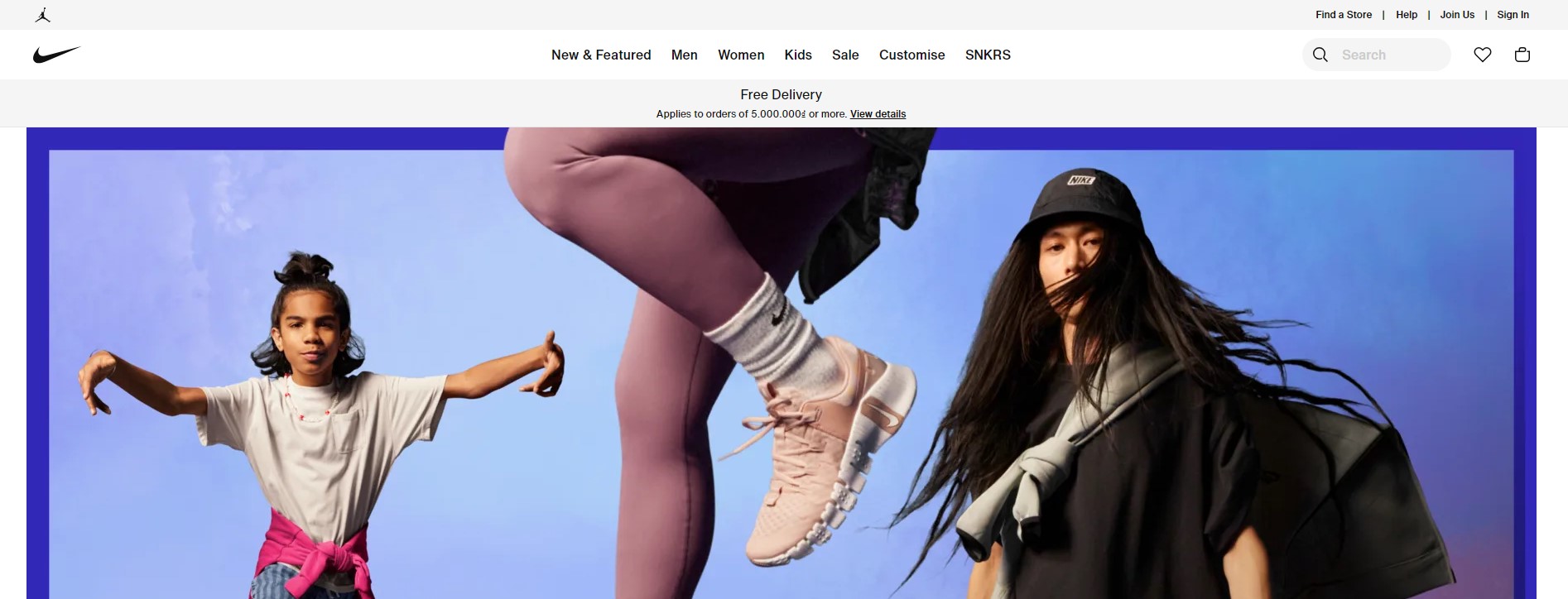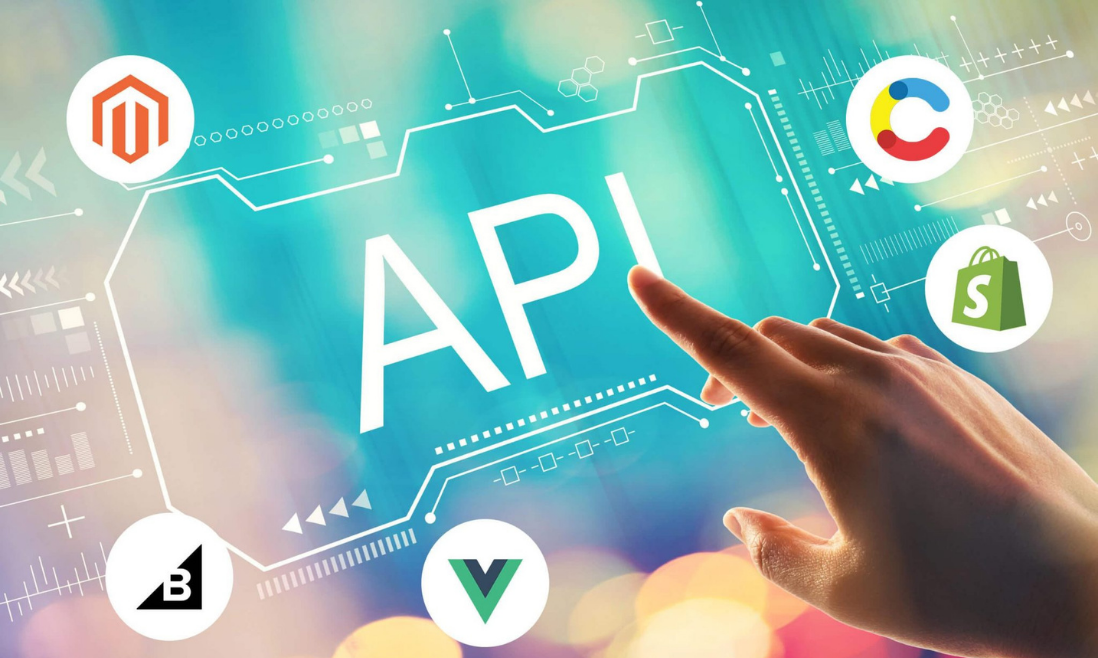In business, staying ahead of technology trends isn’t just useful—it’s essential.
Enter the headless website, a groundbreaking approach that separates the back-end of a website from the front-end. This separation allows for more flexibility, faster web pages, and a customized user experience that traditional websites can struggle to provide.
In this blog post, we’ll dive deep into what headless websites are, explore their benefits, and examine why they might be the perfect choice for your next web project.
What is a Headless Website?
A headless website refers to a website with a decoupled architecture. This means that the presentation layer (frontend) is built separately from the management layer (backend).
Thanks to this unique structure, it is now possible for developers to freely edit the back-end without worrying about incidentally impacting negatively on the frontend, and it also works the other way around.
Traditional websites often have a block structure. Every component in it is closely linked. So any change at the back or the front affects the other part of a website, limiting the capabilities of its own development.
Headless Website Architecture
As mentioned in the definition, a headless website has a decoupled structure. The presentation layer and the support layer are not directly attached. Instead, developers will create APIs to link these layers.
To easily understand this technology, imagine the frontend and backend are two islands, and API connects them. The data is passersby, and it will move between the islands through the bridge – API.
Besides APIs, often headless websites also have a headless CMS. This is a content management system hosted in the cloud. Admins can dynamically distribute content in the CMS to the front end through APIs.
The Pros and Cons of Headless Websites
When exploring the concept of headless websites, it’s crucial to weigh both the advantages and disadvantages. Understanding these pros and cons will help determine if a headless website is the right choice for your needs.
Pros

No customization limit
This is one of the biggest strengths of a headless website. It has unlimited customization possibilities. In particular, modifications usually won’t affect the database, so there’s less work to worry about.
Business owners are free to design the frontend to suit their brand. After completing the design and construction, they’ll use APIs to connect the presentation layer to the backend.
Better customer experience
E-commerce now requires businesses to be quick and up-to-date with new trends. Because the front and backend are separated, they can be changed individually.
For instance, an owner can deploy reward programs easily without touching the backend, reducing the time and effort invested in website management.
Moreover, when the backend needs maintenance, it won’t affect the web’s frontend, eliminating the case of downtime. In other words, adjustments in the backend won’t impact your user’s experience.
Shortened time & cost to market
Backend building is one of the most time-consuming tasks. Headless website developers will now be able to focus on building the support layer since there is no specific frontend.
Since they start at the finish line, the website’s time-to-market will be significantly reduced.
Moreover, headless commerce also means businesses can build their site for cheaper costs.
Only the backend fee is required; the other expenses related to the frontend (like hosting or licensing fees) can be customized as desired. This will make it easier for you to control your budget.
Sometimes, there will be mandatory features for traditional websites, even if you don’t need them. This can inadvertently increase costs. With the headless approach, you can exclude these fees.
Easy technology integration

Besides the above unique capabilities, the convenience of technology integration is also a plus point for headless websites. It can connect with many useful technologies today, such as CRM or CMS.
To make things easier to understand, we will give a specific example. Let’s talk about the email function.
You can send emails to customers using the standard website’s email features. However, the operations will take much more time and effort than using an email automation extension.
This is solvable with headless e-commerce. All you need to do is integrate the backend with a third-party email extension like MailChimp, then connect it to the frontend through an API.
The ease of integration promises a web to be future-proof as businesses can incorporate new technology into their online store.
Omnichannel selling
After the COVID-19 pandemic, many consumers will continue their online shopping habits.
As a result, diversification in sales channels is becoming more critical than ever for businesses. This will help them reach more customers and stay competitive by providing the best experience.
A headless website will be a great assistant for you. It allows you to build the right frontends for optimal sales funnels.
You are free to rethink the purpose of each channel, and optimize or even redesign it without restricting the customer’s shopping process.
Cons

Increased Development Complexity
One of the key disadvantages of headless websites is the increased complexity in development.
Unlike traditional websites, where the content management system and the front end are closely integrated, headless websites separate these two components. This means developers must build the frontend presentation layer from scratch and ensure it works seamlessly with the CMS through APIs.
This separation requires a higher level of expertise, especially in APIs, as developers use them to retrieve and display content. The need for specific skills can make finding the right team more challenging and potentially increase the cost of development.
Content Management Challenges
Another significant disadvantage of headless websites is the challenges associated with content management.
In traditional setups, content management systems come with WYSIWYG (“What You See Is What You Get”) editors. These editors allow content creators to see how their work will look on the website as they are creating it.
However, in a headless setup, this feature is often missing because the content management system is separate from the frontend display.
Without a real-time visual preview, content creators may struggle to understand how their text, images, and other elements will appear to the end-users. This can lead to issues with layout and design that are only discovered after the content goes live, potentially requiring further adjustments and rework.
Potential SEO Considerations

A further disadvantage of headless websites concerns potential SEO (Search Engine Optimization) considerations, particularly related to how content is rendered for the user.
Many headless websites use client-side rendering, which means they rely on JavaScript running in the user’s browser to display content. This approach can create challenges for search engine bots that scan and index the site’s content.
Search engines may struggle to properly crawl and index websites that are heavily dependent on JavaScript for rendering. If the content does not load quickly enough or if JavaScript errors occur, the content might not be indexed at all, leading to visibility issues in search results.
How to Build a Headless Website
In the following sections, we’ll go through the essential steps needed to successfully build a headless website, from choosing the right tools and technologies to deploying your site for the world to see.
Step 1: Choose Your Tech Stack
The first step in building a headless website is to choose your technology stack. This includes selecting systems for managing content, creating the presentation layer, and handling data queries effectively.
Each component plays a crucial role in how well your website performs and how easily content can be updated and displayed.

Headless CMS
Start with selecting a headless Content Management System (CMS), which will store and manage all your content. Popular choices include:
- Contentful: Known for its powerful APIs and extensive integration capabilities.
- Strapi: Offers open-source flexibility and is customizable.
- Sanity: Unique for its real-time collaboration features.
- ButterCMS: Ideal for those looking for a marketing-focused solution.
- Prismic: Provides a user-friendly editor and custom type models.
Frontend Framework
Choose a JavaScript framework that will define the look and interaction of your website’s frontend. Some widely used frameworks are:
- React: Highly popular and versatile for dynamic content.
- Vue.js: Known for its simplicity and straightforward integration.
- Angular: Great for rich, interactive web applications.
- Next.js: A React-based framework that enhances SEO capabilities and optimizes performance.
- Gatsby: Also React-based, best for generating static sites that load quickly and handle data efficiently.
API Technology
Decide how your frontend will communicate with your headless CMS.
- REST APIs: Most headless CMSs support REST, which is straightforward and widely used.
- GraphQL: Provides more flexibility and efficiency by allowing you to request exactly the data you need.
Choosing the right technologies will ensure that your headless website is not only functional but also capable of scaling and evolving with your needs. Each option has its strengths, so consider what best fits your project requirements and team skills.
Step 2: Set Up Your Headless CMS

The second step in building a headless website is setting up your headless Content Management System. This system will handle all your content and make it accessible to your website’s frontend through APIs.
Here’s how to set up your headless CMS:
- Create an Account: Start by creating an account with the headless CMS you chose from the options like Contentful, Strapi, Sanity, ButterCMS, or Prismic. This process typically involves registering with your email and setting up a password.
- Define Content Models: After logging into your CMS, the next important task is to define your content models. Content models are templates that describe the structure of different types of content you will use on your site, such as blog posts, product listings, or web pages. For each content type, you’ll specify fields that represent the content’s elements like titles, text bodies, images, and links.
- For a blog post, you might include fields for the title, author, post date, body text, and featured image.
- For a product listing, fields could include the product name, description, price, and product images.
Creating clear and well-structured content models is crucial because it dictates how you organize, manage, and ultimately retrieve and display this data on your website. Take the time to plan your models according to the needs of your site to ensure smooth operation and maintenance.
Step 3: Develop the Frontend

The third step in building a headless website is developing the frontend, which is the part of your website that users will interact with. This stage involves several key tasks:
Design
First, create the visual layout and design of your website. This can be done from scratch if you have specific branding or stylistic preferences, or you can use UI libraries and frameworks to help speed up the process and ensure a polished, professional look.
Tools like Bootstrap, Material-UI, and Tailwind CSS are popular choices that offer ready-to-use components that can be easily customized.
API Integration
Next, you will need to build components that can fetch and display the content stored in your headless CMS.
This involves writing logic in your frontend application to connect to the API endpoints provided by your CMS. You will use these endpoints to retrieve the content models you defined (like blog posts or product pages) and display them on your website.
Rendering
Decide on the rendering method for your website, which can significantly impact performance and SEO:
- Client-Side Rendering (CSR): With CSR, the browser fetches content from the CMS and renders it directly on the user’s device. This method is flexible but might be slower and less optimal for SEO.
- Server-Side Rendering (SSR): SSR enhances SEO by rendering the webpage content on the server before it is sent to the browser. This method is great for improving load times and is beneficial for content-heavy sites.
- Static Site Generation (SSG): For the best performance, SSG allows you to pre-render pages during the build process. The static pages are then ready to be served instantly to users, which makes it extremely fast and reliable for websites where content changes infrequently.
Deployment
Finally, choose a hosting platform to deploy your frontend. Platforms like Netlify, Vercel, and AWS Amplify offer easy deployment processes, automatic scaling, and additional features like direct integration with headless CMS platforms, making them ideal for hosting modern web applications.
Step 4: Manage Content

The final step in building a headless website is managing content, which involves entering and updating information that your visitors will see. This process is straightforward but essential for keeping your website fresh and relevant.
Add Content
Begin by using the web-based interface of your headless CMS to add content. This could be anything from blog posts and articles to product descriptions and images.
The interface is typically user-friendly, allowing you to fill out the fields that you defined in your content models, such as titles, text, and media.
Preview Content
Depending on the capabilities of your headless CMS and the way your frontend is set up, you may be able to preview your content before it goes live.
This is a helpful step to ensure everything looks right and works as expected. Previewing can help catch errors or design issues that might affect user experience or readability.
Publish Content
Once you are satisfied with how your content looks during the preview, the next step is to publish it. Publishing makes the content live on your website where it can be seen by your audience.
This step might involve simply clicking a ‘publish’ button, which pushes the content through the API to your frontend, updating your website almost instantly.
Content management is an ongoing process. Regularly updating your site with new and relevant content can help keep your audience engaged and ensure your site remains dynamic and interesting.
3 Excellent Headless Website Examples in Business
Many experts have recognized the potential of headless technology for e-commerce. And many large companies have applied this technology to their online stores.
Redbox

A real-world example of a headless website is Redbox. Redbox uses a headless setup to manage and deliver content efficiently across its website and other platforms like mobile apps and kiosks.
In a headless setup, the content management system (CMS) is separated from the user interfaces, which means changes and updates can be made quickly and do not affect the front-end systems directly.
This setup allows for more flexibility and faster changes, improving the experience for users who expect up-to-date information and quick service. The headless architecture is particularly beneficial for a company like Redbox, ensuring seamless content delivery and consistent user experiences no matter how or where customers choose to access their services.
Nike

Nike is another excellent example of a company that uses a headless website approach for parts of its online presence.
By adopting this strategy, Nike aims to provide a more dynamic and personalized shopping experience for its customers. In a headless setup, the back-end — where all the product information is stored — is separate from the front-end, which is what customers interact with.
This separation allows Nike to update and manage its product listings and content without disrupting the customer-facing side of the website. It also enables Nike to tailor the shopping experience to individual users.
Forbes

Forbes is another prominent example of a company utilizing a headless website architecture.
This approach is particularly beneficial for Forbes because it allows them to manage their extensive library of articles, data, and multimedia efficiently. Forbes handles a lot of content that includes news stories, feature articles, videos, and podcasts, which are updated frequently throughout the day.
By using a headless CMS, Forbes separates the content management from the presentation layer. This setup means that the back-end, where all the content is stored and organized, does not dictate how the content is displayed to the reader.
Instead, the content is delivered via APIs to the website and can be styled or arranged differently depending on where and how it is being viewed.
FAQ
What is a headless web?
A headless website refers to a web architecture where the front-end (user interface) is decoupled from the back-end (content management system). This setup allows developers to use APIs to deliver content across multiple platforms, facilitating more flexible, scalable, and personalized user experiences.
What are the benefits of a headless website?
Headless websites offer several benefits: enhanced flexibility in UI/UX design, faster content delivery across multiple platforms, improved scalability, and easier updates. They facilitate personalized user experiences and can improve site performance and developer efficiency through API use.
What does it mean to go headless?
Going headless refers to adopting a web architecture where the front-end display layer is separated from the back-end content management system. This enables content delivery via APIs to various interfaces, enhancing flexibility, scalability, and the integration of new technologies.

